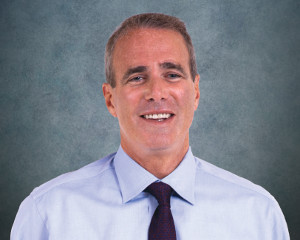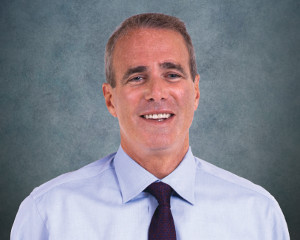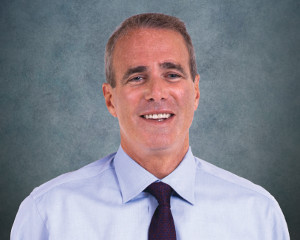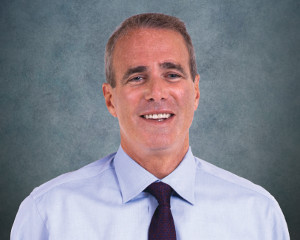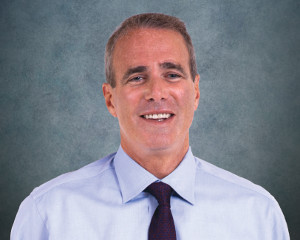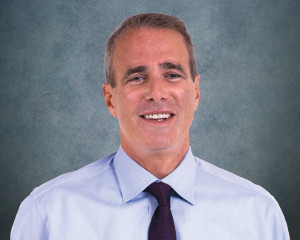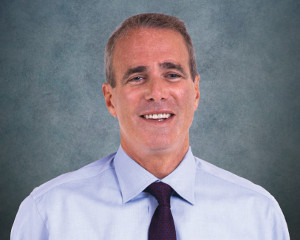Do you know the three steps?
That’s what Paul Potratz of Potratz Advertising asked viewers in this week’s “Think Tank Tuesday” video.
In the video, Potratz outlines what he views as the three steps you need to take your sales career to a new level.
“Are you just starting your career, or wondering how to improve, grow and blossom to the next step?” asked Potratz. “Every good salesman knows that the key to growth is to always learn more. There are numerous ways to reach your goals, but we’ve narrowed it down to the three most important steps to take to ensure your success.”
Potratz broke it down like this:
Step 1: Understand your customer relationship strategy.
– Customer Relationship Management
– Use it like it’s your lifeline
– Make your plan, work your plan.
Step 2: Revamp your business card.
– Use a picture of yourself.
– List your email address.
– List your cellphone number.
Step 3: The Human Voice
– prepare your daily list of contacts.
– scavenge business cards.
Potratz said these steps may seem simple, but he contends salespeople will be “on the right track” after checking off these tasks.
Astute Velocity dealers have understood that the “car is the star” in used vehicles.
That’s why they go to great lengths to make sure they acquire vehicles with the color, equipment and trim levels that market data affirms will matter most to potential buyers. To be sure, they still acquire and retail “bread and butter” cars, but they don’t expect these vehicles to deliver the gross profit, or sell as quickly, as units that the market validates as truly special.
In recent weeks, I’ve been struck by the number of dealers who are realizing similar, “the car is the star” insights in new vehicles.
Take John Smith Jr., owner of the Fort Smith, Arkansas-based Smith Auto Group. Earlier this year, his Chevrolet store had high hopes for the manufacturer’s newly redesigned ¾-ton Silverado pickup. But over the summer, Smith was troubled when he saw the numbers as they sold the trucks.
“I thought, ‘OK, why did we move this truck for this low amount of gross? It’s a pretty hot commodity,’” he says.
After reviewing market data with his manager, Smith and his team realized the problem. “We had the package below where we needed to be in the marketplace,” he says. “We found that in this market, people buying that truck are going all the way and want all the bells and whistles. That takes those trucks to the $60,000 range, which is a pretty steep truck. But they’re selling.”
To be sure, Smith notes the “constraints were on” and “we took what we could get” when ordering the pickups from the factory.
I’ve heard similar insights from dealers using vAuto’s Conquest system. They are now able to see how much color, equipment and trim nuances across model lines make the difference between a “star car” and a “bread and butter” unit that merits a turn-minded exit strategy.
“We’ve moved from having a knee-jerk reaction to keeping a watchful eye on our new-vehicle inventory,” Smith says. “A consistent, watchful eye is far more valuable than having something creep up on you and hit you in the head.”
Dale Pollak is the founder of vAuto. This entry and Pollak’s entire blog can be found at www.dalepollak.com
In this week’s Think Tank Tuesday video, Paul Potratz of Potratz Advertising tackles ways dealers can make their stores stand out from the pack, and explains how dealers can use video to help create their store’s image.
Does your brand have a unique image, or are you forced to market by price in order to compete with other dealerships?” Potratz asks.
Potratz says the biggest thing that is missing from advertising these days is creativity.
Advertising by price will only get you so far, and Potratz says this strategy won’t lead to increased profits.
You pricing is on your website, and Potratz says the goal of advertising should be to drive people to the website – not offer consumers the same information.
“If you are doing price-point advertising with no creativity, you are talking to a small percentage of the market. I want you to get creative,” said Potratz.
Potratz also offers examples within the video report of a few commercials that capitalize on creativity.
Consider the following research findings about the up-and-coming generation of car buyers, known as Milennials or Generation Y:
- Theirs is a “kinship economy,” according to J. Walker Smith, chairman of The Futures Company, a marketing research firm. As Millennials engage retailers, a positive experience is paramount. “It’s all about how we resonate with people,” Smith says. “They don’t want a relationship with your brand, they want relationships with other people.
- They expect to “co-create” retail experiences, says Sheralyn Hartwell, executive director of Frank N. Magid Associates, which specializes in business strategy research and development. “They expect to have their own custom experience, and they expect to be co-creaters,” Hartwell says.
- They believe they are a generation of “creators” who are part of a group that will “change outdated systems,” says Danielle Paponetti, director of ad sales research for Viacom Media Networks, which owns MTV and VH1.
- They view cars as “appliances” that offer the ability to “explore and control” their destiny. They are less likely to get driver’s licenses when they reach driving age, and vehicle purchases often coincide with life events, such as a new job or relocation.
- They use technology (smart phones, in particular) to research shopping decisions, and they “expect you to know more than they do” about the products/purchases under consideration, Hartwell says.
- They are less than satisfied with the in-store experiences dealers offer, says Isabelle Helms, vice president, research and market intelligence for Cox Automotive. In particular, negotiation and paperwork are among the chief complaints they cite about buying vehicles, she says.
I gleaned these insights from a recent Cox Automotive-sponsored research summit in Atlanta. To me, the individual findings were not all that surprising — they ran consistent with what I’ve read and seen in the past. However, taken as a group, the insights got me thinking about three specific things dealers will need to do to remain relevant and satisfying retailers as they increasingly serve a new generation of smart, technology-astute buyers.
1. Align your sales process and strategy to emerging expectations: It shouldn’t surprise any dealer that tomorrow’s generation of vehicle buyers doesn’t like a purchase process that requires negotiation and up to four hours in the showroom to complete a deal. In fact, these are key drivers behind the growing number of dealers who have re-engineered their sales strategy toward a model that moves cars with little or no negotiation. Some are pressing the in-showroom sales timeline to 90 minutes and less.
This model requires two steps many dealers are still reluctant to undertake—putting “first pencil”-like prices on new/used vehicles online, and standing firmly behind their market-validated asking prices in the showroom.
To be sure, this sales strategy re-alignment isn’t easy. It’s really a cultural shift that requires payplan and process changes to advance a business model where transparency leads to trust and, in turn, trust leads to more cost- and time-efficient sales and improved profitability. Currently, dealers who have adopted the limited/no-negotiation models report positive early pay-offs, and greater satisfaction from Millennial/other buyers who are delighted to share their experiences with friends.
2. Embrace Technology: If anything, the findings listed above suggest that the speed of technological change for dealers will only increase. Millennial buyers like photos, but they love videos. They get frustrated when they can’t easily find prices or vehicles using mobile devices. More and more, they’ll also want to complete a greater share of their vehicle purchases online.
In her research findings, Hartwell shared that Millennials want to engage retailers who “get them.” This means dealers will need to know more about each customer before the first phone call or showroom visit—a level of understanding that is only possible with new technologies. In the end, dealers will need to make sure every customer engagement picks up where the last one left off.
3. Let go of the Gen Y stereotypes: Paponetti’s research reminds Baby Boomers like me that we can be dismissive of the positive traits Millennials can bring to a business. They consider themselves creative innovators who thrive in collaborative environments and question the “whys” behind processes that strike them as inefficient or outmoded. They’re technology “natives” for whom adapting to new technologies is relatively easy. They have a willingness to take risks and learn from mistakes. They are loyal and hard workers when they receive the near-constant level of feedback they need to shine and feel happy.
As dealers prepare for future buyers, they will be challenged yet again to let go of some of the traditional ways of retailing new/used vehicles. The good news: Based on the size of the Millennial demographic, there will be a lot of up-and-coming professionals entering the work force to help take their businesses where they’ll need to be.
Dale Pollak is the founder of vAuto. This entry and Pollak’s entire blog can be found at www.dalepollak.com
You might say the month-in-month-out focus of automotive retailing is both a blessing and a curse.
It’s a blessing when you’ve had a bad month. As the next month starts, the pain of a poor prior month tends to fade quickly.
Conversely, the month-to-month mindset is a curse when a really good month cascades into complacency when the calendar turns a page.
The challenge for dealers, of course, is to rise above the ups and downs of the business and stay focused on the long game of continuous performance improvement, irrespective of past failures or successes.
I was reminded of this higher order of operational excellence when I received a note this week from dealer Rick Ricart of the Ohio-based Ricart Automotive Group.
You may remember Ricart mentioned here recently for earning distinction as the No. 2 used vehicle retailer in the country. At the time, he pledged to make No. 1 for next year’s rankings.
Ricart and his team appear to be well on their way. They had a record-setting August with more than 770 used vehicle sales (more than double their monthly average a year ago), and he’s pushing his team to keep their collective feet on the accelerator.
In the note Ricart shared with his team, he gave them props for a record-setting month, and then focused their attention on next steps to finish the year, and start 2015 with an even higher degree of profitability and success. Here are some excerpts from the note, which I thought were worthy to share with the broader community of Velocity dealers:
“Welcome to September. A strong finish to August helped us deliver a record 771 retail used units. We took a hit on gross to get the units, but it helped move quite a few aged units, which is always good.
Switching gears and thinking about the 4th quarter, the key to the success of this department is all about Inventory and Velocity. We are past those summer months that huge volume of customers help hide some of the “dice rolls”, if you will. Time to tighten up the buying. Unless you are 100% sure we can make 6%-8% profit on day 21: Do not buy the car. Critical. I see too much repricing to target at day 14-21 that we are only asking a few hundred in markup. That has to stop now. We should be able to steal cars. The market is dropping. Don’t get tricked into over-paying …"
Ricart’s note goes on to discuss game plans for specific, problematic vehicles, and ways to lower the group’s used vehicle inventory investment (e.g., “buy selective and smart”).
The note struck me as a great example of the kind of dealer-level involvement in used vehicle operations that is critical for success in today’s market. In addition, it’s another reminder that tomorrow’s used vehicle profitability and sales is rooted in the astute exercise of Velocity fundamentals today.
Congrats, Rick and team. Keep up the outstanding work!
Dale Pollak is the founder of vAuto. This entry and Pollak’s entire blog can be found at www.dalepollak.com
There’s a lot of talk in our industry about the difficulties dealers face finding — and keeping — good employees.
Much of the discussion often focuses on ways dealers and the broader industry can change the less-than-favorable reputation of automotive retail careers as a “last resort-type” option for people who, for one reason or another, can’t find work in other industries.
Of course, the onus for changing this reputation largely falls to dealers. They are the ones who, on a day-to-day, employee-by-employee basis must prove that automotive retailing can be a meaningful, rewarding and satisfying career choice for aspiring young professionals.
Last week, I received a link to a video by the Germain Motor Co., run by dealer Steve Germain, is using to attract new employees. The video that can be seen here features one of Germain’s sons, Austin, in a variety of dealership roles explaining why the dealer group seeks employees who are “consistent, take ownership and build strong relationships” and how the group invests in their success through autonomy, ongoing investment, technology and training. The younger Germain urges viewers to “stop looking for your next job and start your career today.”
COO John Malishenko says the video is part of broader effort at Germain to take its recruitment and retention efforts to the next level. “As businesses, we’re as people- and process-focused as any other industry, if not more so,” Malishenko says. “We hope the video will connect Germain to a younger generation of employees. We want them to know that if they share our values, they’ll share in our success.”
The video strikes me as a good example of the proactive efforts dealers will need to undertake to both change the perception of automotive retailing careers in general, and to attract and retain the next generation of employees who can help ensure the long-term prosperity and viability of our business.
Dale Pollak is the founder of vAuto. This entry and Pollak’s entire blog can be found at www.dalepollak.com
It happens every year. And every year many dealerships come to the sudden realization that they have too much inventory, or their aging inventory has crept up on them. Now it is fall, and the wholesale prices are doing just that — falling — at an alarming rate, creating an immediate need for a solution. The solution, of course, was to lean used-car inventories back as your operation approaches mid-July and continue a lean inventory operation through mid-September. But between the heat of the selling season and vacations, this scenario seems to elude even the most seasoned veterans every year.
The reality? You've missed the great August sell-off. What can be done? Don't fret. Here are five highly successful options to still liquidate that aging inventory before the complete market correction takes place:
- Re-evaluate the retail situation of these vehicles. Have you and your team re-walked the vehicles before making the wholesale decision? I can't count the number of times that I walked up to an aged used car and quickly saw why it hadn't sold. Our customers probably told our team why as well, but nothing was ever done to correct or fix the usually small issue. So let's not think that aging vehicles can't still retail quickly, provided they look like the stars they should have been in the first place. Also, check the retail price to make certain that it not only reflects the correct price to market, but that it also is priced right given market availability, mileage, color, etc. And while we are at it double check your CRM system for the customers that were in on these vehicles. Make a manager call to see if the customers are still interested in the vehicle(s) or if they know anyone who may be interested at the new lower price(s). This process will often find retail customers who are still in the market and worst case you may sell some other inventory.
- List it online. There still is a wholesale market out there with buyers. Online remarketing is still your best bet. Buyers who are looking for inventory are often seeking specific vehicles. If your inventory fits what they are looking for, there is a good chance a deal can be struck. The best part is you get to keep the inventory on the lot, still attempting the retail approach. Just make certain that it is properly priced to be attractive to online wholesale shoppers.
- List it where it matters. We all know all-wheel drive cars and four wheel drive trucks sell better in the northern states. Front wheel and two wheel drives sell better in the southern states. Now is a good time to start listing vehicles for delivery in those markets, before winter sets in, as the higher values of these vehicles will still look attractive.
- Transportation assistance is like gold this time of year. I don't know about you, but I love transport assistance when it's real. Don't play games with this one. No one likes to buy three vehicles or do this to get that. Make the offer real. This oftentimes is a tipping point when it comes to the buyer saying yes. At the end of the month, the $200-$300 per vehicle will be well worth it.
- Let your finger do the dialing … you might be surprised! Start calling the dealers in your market place, "What? What?!" you say. Again, you'll be surprised at the results. But like anything, it's how you state or phrase it. If you call around offering the wrong product to the wrong stores or sound desperate, like your job is on the line, then the offers will reflect those perceptions. However, if you make the calls as a gesture of good will — "I got this wonderful car in on trade, but it doesn't fit our customer base (note age is not a discussion point), it's reconditioned and just needs to be at the right store." — now you have a discussion. One of the best parts of this is the networking benefit. Potentially more inventory balancing can be done with your new group of dealership friends. But I can't wholesale direct to other stores you say? No problem. Just contact one of the auctions that you work with, and ask if they would provide the facilitation services and build your network (and theirs).
I'm certain there are other good ideas out there to consider. Just know that these situations are still manageable, and the potential losses can still be managed before the leaves start to fall. But time is of the essence. Whatever you do be aware that fall is coming. The change may look slow and the fall of pricing gentle, but I assure you the landing can be hard. That's fall for now. And I'll see you in the lens of the lane.
There’s been a fair amount of hand-wringing in the industry following the recent New York Times editorial that addresses the rise of vehicle financing for credit-challenged buyers and how some deals make their financial situations worse. The piece calls for greater regulation of the market and rules that would prohibit dealers from “gaining additional profit by manipulating interest rates.”
NADA issued a strong rebuttal, an Automotive News columnist says the editorial makes “unreasonable demands” while “grossly misrepresenting” industry F&I practices, and it’s a topic of discussion among dealers.
Here, however, I’d like to side-step the debate over greater regulation of dealer F&I practices — except to say that Wall Street’s new-found interest in vehicle loan portfolios, particularly in sub-prime, suggests more, not less, scrutiny in the future.
Instead, I’d like to focus on an aspect of the editorial that has generated little, if any, industry discussion — what consumers think about vehicle financing and other F&I practices at dealerships. Consider the following reader comments on the editorial:
From Joshua Bauman, Brooklyn, N.Y.: “Car dealers are dependent on these types of loans to generate the kinds of profits they need to stay in business. Selling the used cars at large markups to people with bad credit makes up for all the new cars sold and leased at little or no profit. While most dealers are able to make 1500 to 2500 a unit on new cars, most of that money comes from the “back end” or F&I (finance and insurance) department … The solution is not so simple, but the sub-prime auto loans should be a thing of the past. Additionally, the ability for car buyers to make deals close to or even below dealer invoice on new cars needs to end as well, if we want to expect auto dealerships to stay in business while running a clean finance department.”
From David R (Location Undefined): “Lots of us (probably most of us) do research on what car to buy; how reliable it is, what kind of fuel economy it gets, etc. Yet few of us do that kind of research regarding the dealership, but fortunately, that task has gotten considerably easier. It is now pretty easy to go online and see what kinds of complaints any particular dealership has received. Angieslist.com and yelp.com are but two websites that have frank descriptions of consumer transactions … Considering that virtually all cars made now are tremendously safer and more reliable than cars of the past, picking the right dealer is more important than picking the right car.”
From Allison, Irvington, N.Y.: “The Internet has removed dealers’ monopoly on price information, but there is far less transparency on credit pricing. Therefore, they make more of a profit on the loan kickbacks than sale of the vehicles … If at all possible, get pre-qualified for a loan at an acceptable rate before setting foot in a dealership.”
From Jon Greene, New York City: “It is interesting to consider that we may be looking at the beginning of the collapse of the car dealership as a business model. If regulators are successful in clamping down on the banking side of dealerships’ profits, it just may be the end. Long regarded as one of the shadiest players in any local economy, car dealers have always found clever ways to squeeze enough from customers’ pockets to keep their own heads above water. But transparency in pricing has pinned them against a wall. That genie is out of the bottle and cannot be put back; so margins on sales are not enough to keep the doors open. Without the financing side, what’s next? We should ask what utility these dealerships provide …”
These reader comments caught my attention for two reasons:
First, the comments indicate a high level of awareness about the ins/outs of dealership F&I practices and profitability. This level of awareness will be particularly troubling for dealers who have come to over-rely on F&I income while paying less attention to profit-draining inefficiencies in other departments.
Second, dealers have an opportunity to turn the high level of consumer F&I awareness and dissatisfaction to an advantage. Just as today’s consumers respond favorably to more transparent pricing, they’re likely to have the same positive reaction when they feel comfy and confident with what your F&I managers tell and sell them behind closed doors.
I suspect we’ll see the regulatory debate heat up in the coming months, and it’ll likely boil down to what constitutes a “fair profit” for dealers and what steps they must take to earn it properly.
In this environment, dealers and industry leaders should be focused on defining what a “clean” and customer-friendly F&I department looks like before someone else does.
Dale Pollak is the founder of vAuto. This entry and Pollak’s entire blog can be found at www.dalepollak.com
On Sunday, The New York Times published an article about efforts by organizers of the Electric Zoo Festival, a three-day electronic dance music (EDM) event in New York, to curtail drug use among attendees.
A year ago, the event shuttered a day early after two people died from apparent drug overdoses. In more recent weeks, six drug-related deaths occurred at EDM festivals in Canada, Maryland and Nevada.
I was drawn to the article both as a parent of a teenage son who listens to EDM, and as a curious fan of music of all types.
The article includes a quote from Robert F. X. Sillerman, a media mogul whose SFX Entertainment now holds a significant financial stake in the Electric Zoo Festival:
“Electronic music is the soundtrack for this generation. In my day, music was a series of short stories, with a beginning, middle and end. But what’s fascinating about Electric Zoo is that what you see are 10,000 kids dancing in unison, without a narrative, and not all hearing the same thing. The paradigm has changed. The Internet has created a collective mind-set of individuals. The audience is now in charge.”
I wasn’t expecting the article to offer any insights about retailing new/used vehicles, but there it was — today’s vehicle buyers are definitely in charge, and dealers who embrace this new reality will fare better than those who resist it.
Dale Pollak is the founder of vAuto. This entry and Pollak’s entire blog can be found at www.dalepollak.com
My travels this week took me to East Tennessee to visit two dealers, Daniel Johnson, GM of Johnson City Toyota, and Dustin Walters, GM of Friendship Hyundai.
The visits were part of a larger Cox Automotive program that aims to help dealers earn financial rewards from their investments in AutoTrader.com, Manheim and software companies like vAuto.
Both Johnson and Walters are part of an up-and-coming generation of dealers who are making quite a mark in their local markets and beyond.
As the GM of the Toyota store, Johnson is leading a fast transformation of the business. In just 45 days, he and his team have added 50 additional new/used vehicle sales, a 30 percent improvement from the store’s average under prior ownership.
The success isn’t all that surprising when you consider Johnson’s own quick rise from service advisor to NADA Dealer Academy graduate to GM/owner—all before he’s 40. Johnson is a progressive thinker who also appreciates the history of our business (as evidenced by a general ledger and ribbon writer from the previous owner displayed in the showroom).
Just down the highway, Walters is a second-generation dealer whose family-owned group earned the honor of Automotive News’ Best Dealership To Work For award last year for its Chrysler-Jeep-Dodge-Ram in nearby Bristol. This dealership, and Walters’ Hyundai store in Johnson City, are also on the list of contenders for the 2014 Best Dealerships award.
In our meeting, Walters and his team were hungry for insights on how technology will give dealers more analytics and tools to make car-buying more efficient and satisfying for consumers than it is today. They also wanted to know how Cox Automotive would help them push their business forward—the mark of sharp minds that understand innovation by dealers and their vendor partners is essential for success today and tomorrow.
As I headed to the airport for home, my time with these dealers made me think that the car business, for all its past faults and indiscretions, has an incredibly bright future.
Dale Pollak is the founder of vAuto. This entry and Pollak’s entire blog can be found at www.dalepollak.com

